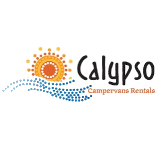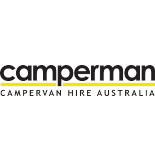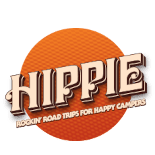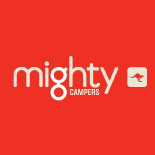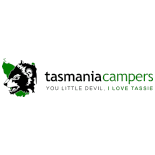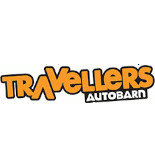
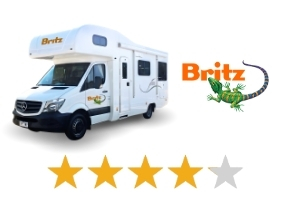
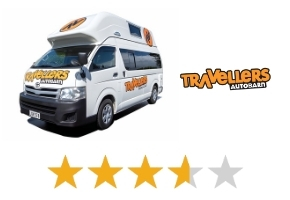
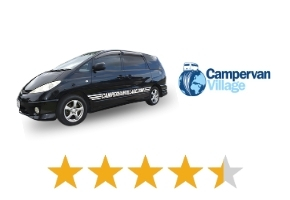
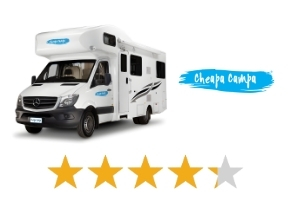
Renting a campervan in Australia is easy with Camper Champ. We compare prices from over 20 companies across the country, offering everything from budget campervans to luxury motorhomes to suit your travel plans.
Campervan rental costs in Australia range from $40 to $500 per day for most rentals, and depend on vehicle type and travel dates.
Pick up your campervan in Sydney, Melbourne, Brisbane, Cairns, Perth, Hobart or other major cities. With extensive RV infrastructure, including water refills and scenic campsites, exploring Australia by campervan is affordable and convenient. One-way rentals are also available for additional flexibility.

Plan the ultimate motorhome road trip - from the Great Barrier Reef and Blue Mountains on the East Coast to the red hot outback and vast Western Australia.
Discover Australia your way by choosing a camper that suits your travel needs.
Not all vehicles may be available. Use the search tool to check availability for your travel dates.

Australia is an enormous country—it’s the world’s largest island and slightly smaller than the United States. Although vast swathes are covered in desert, there’s plenty to see between the dusty, arid sprawl.
Given the sheer magnitude of this landmass, travellers should focus on one region at a time.
Cruising down the East Coast is the classic Australian road trip. From sparkling surf beaches to laidback coastal hamlets and glistening modern cities, the eastern seaboard has a plethora of places to explore. A quick jaunt inland have you meandering, sopping wet rainforest, gawking at gushing falls, and hiking lofty Great Dividing Range trails.
Top highlights include the primal sandy utopia of Fraser Island, the emerald-green Whitsundays, and the cragged limestone stacks of the Great Ocean Road. But there are many, many more.
Kick-start your adventure in Melbourne (VIC), Sydney (NSW), Brisbane (QLD), or on the Gold Coast.
As you blaze north past the Tropic of Capricorn, the air thickens, and the scenery transitions into a luscious landscape of sugary-white beaches and swaying palms.
Far North Queensland is home to Australia’s iconic Great Barrier Reef, a technicoloured dreamscape of kaleidoscopic corals and curious sea critters. Beyond these underwater adventures, this humid tropical region is awash with teeming rainforests (the Daintree is a must), fertile hinterlands, and thundering falls. Picture-perfect sandy stretches straddle the coastline, from Mission Beach to Port Douglas and Cape Tribulation.
If a dreamy tropical paradise appeals, start your adventure by renting a campervan in Cairns.
Keen to live out your childhood Crocodile Dundee adventures in real-time? Then a holiday to the Top End beckons.
Occupying the upper end of the Northern Territory, this remote tropical wonderland is chock full of jaw-dropping national parks and idyllic yet croc-infested waterholes. Kakadu packs scenery straight out of an indigenous Dreamtime storybook, while Litchfield National Park boasts some of Australia’s most breathtaking falls. Kayaking down the gorgeous Katherine Gorge is a quintessential Top End experience.
If you’re aching to encounter monstrous reptiles up close, jump on a Jumping Croc River Cruise or dive inside an acrylic-strengthened glass enclosure at Crocosaurus Cove.
Tempted? Start your Top End experience by renting a camper in Darwin.
Smack bang in the nation’s geographic heart, the Red Centre encapsulates the magic of the Australian outback.
The top drawcard is Uluru, a spectacular sandstone monolith with an indescribable spiritual presence. A quick drive west takes you to Kata Tjuta, a striking cluster of otherworldly orange rock formations. More jaw-dropping scenery awaits at Kings Canyon, where scenic trails wind through a majestic outback ravine.
Then you’ve got the MacDonnell Ranges, an ancient cordillera chock full of gorgeous blood-red gorges and film-set-worthy swimming holes.
To savour the highlights of outback Australia, rent your campervan in Alice Springs.
Off-the-beaten-track travellers will love cruising around South Australia, the country’s most under-rated state.
Striking arid coastlines define the Eyre Peninsula, while thickly forested mountains comprise the leafy Adelaide Hills. Wine lovers and everyday epicureans will find a smorgasbord of top-notch produce—the Barossa Valley pumps out some of the best Shiraz on earth.
If pristine beaches and abundant wildlife appeal, take the car ferry to Kangaroo Island. Otherwise, the Yorke and Fleurieu peninsulas offer a mix of laidback coastal villages and fertile farming lands. Hardy trekkers will want to drive north towards the Flinders Ranges, a colourful rugged region boasting some of Australia’s top outback hikes.
If South Australia tickles your fancy, begin your motorhome adventure in Adelaide.
Tucked away in the country’s southeast corner, this lush little island is arguably its most spectacular state. Australia’s quintessential parched pastoral lands give way to wildlife-rich rainforests and misty alpine plateaus dotted with glistening tarns. Awe-inspiring shorelines straddle the east coast, while endless pristine wilderness defines the southwest.
Tassie, as the locals call it, is a trekking mecca ram-packed with jaw-dropping nature trails. Routes traverse pristine beaches, thick luscious forests, and rugged lofty ranges—there’s an outdoor adventure for every taste.
Budget-conscious travellers should know Tasmania offers the country’s highest concentration of free camps. And we’re not talking about noisy, rubbish-strewn rest areas. The state is awash with stunning spots to stay overnight without spending a dime.
Hankering to stretch the legs with an endless selection of scenic hikes? Start your Tasmanian campervan adventure in Hobart, Launceston, or Devonport.
The northwest is your best bet. This slice of Australia is among the world’s most sparsely-populated regions. Only a smattering of tiny towns lie scattered around these vast arid lands.
To the north, the Kimberley is a bewildering wilderness of semi-arid savannah and rugged mountain ranges. Many dusty, off-the-beaten-track routes require a well-stocked 4WD. Nonetheless, a conventional campervan will get you across the Great Northern Highway and between a slew of awe-inspiring sites.
The northwest coast brings untouched, sugar-white beaches lapped by calm turquoise-tinged waves. Hit the Ningaloo Coast for pristine scenery and psychedelic near-shore reefs. Further south, Shark Bay is a World Heritage-listed wonderland of picturesque coastal vistas and marine life-rich waters. An inland detour to Karijini entails mind-blowing canyons and waterholes.
Grab a campervan in the tourist-friendly resort town of Broome to gallivant around Northwest WA.
In stark contrast to the northwest, this verdant section of the state is defined by delightful tall tree forests and buzzing coastal towns.
Head north of Perth, the humming WA state capital, towards Kalbarri, a world-class national park home to broad ochre-hued gorges and striking coastal cliffs. A string of laidback seaside hamlets straddles the coastline, each with beautiful beaches and easy-going vibes. The Pinnacles is a must for its alien-like landscape of pointy limestone pillars, while Lancelin lures adventure-seekers for its sand board-friendly dunes.
To the south, Mandurah is a fashionable beach resort popular with holiday-making families. Solitude-seeking campervanners should venture inland to quaint bushlands settlements like Dwellingup, Jarrahdale, Ballingup, and Collie. Mirror-like rivers and thickly forested trails lie peppered around these parts, plus many picture-perfect waterfront campsites.
Heading further down leads you to the South West, a dreamy region of beautiful beaches, protected peninsulas, and sky-high Karri forests. Margaret River serves as the official tourism epicentre, though beach towns like Dunsborough are a better bet if you’d rather laze away your days by the sea.
The WA South Coast is home to a string of fabulous beach towns—Walpole and Denmark are a must. In-between settlements, you’ll find stunning coastlines like Greens Pool, West Cape Howe, Torndirrup National Park, and Two Peoples Bay. Not far north of Albany, Porongurup and Stirling Range house the state’s most spell-binding mountain terrain.
Inland, the Southern Forests is a vast woodland region and a paradise for tall tree lovers. Highlights include Beedelup Falls,Pemberton, Big Brook Dam, and the terrifying climb up the Dave Evans Bicentennial Tree.
The epicentre of the southeast coast is Esperance, from where you can reach postcard-perfect beaches in Cape Le Grand and the Great Ocean Drive. If time permits, it’s worth making a pit stop at Bremer Bay and Fitzgerald River National Park.
Ready for a southwest adventure? Hire your motorhome in Perth.
Yes, it’s standard for most companies to allow an additional driver. This driver and any others must be named on the rental agreement, and there may be a nominal fee.
Additional drivers must also hold an appropriate driver’s licence and must meet driver age requirements.
When renting a vehicle, it is standard to be charged a bond (security deposit), also known as ‘excess’, which is the amount the renter is liable to cover in the event of an accident or damage to the vehicle.
The bond amount fluctuates based on the insurance package selected at the time of rental and is charged and debited on the renters’ credit or debit card.
Terms and conditions vary by rental company; however, most companies do not charge a fee if the cancellation is made three months prior to pickup (including Maui, Britz, Apollo, Cheapa Campa, StarRV, Hippie and Mighty). The closer the date to picking up the vehicle, the higher the cancellation fee will generally be.
Deposit amounts may not be refundable.
With the COVID-19 outbreak affecting many travellers’ plans in 2020, many suppliers have updated their cancellation policies.
To cancel a booking, contact our friendly support team via the Support Page.
All drivers must have a current and full driver’s licence to hire a vehicle. Foreign licences are acceptable if they are in English or accompanied by an accredited English translation. Otherwise, an International Driving Permit (IDP) is required.
Yes, generally unlimited kilometres are included for standard vehicle rentals in Australia. Limits are placed on some types of vehicles, e.g. 4x4 campers. The comparison tool will show you whether your preferred vehicle has unlimited or restricted kilometres.
Note: policies vary from supplier to supplier. Always check the T&Cs for your rental.




